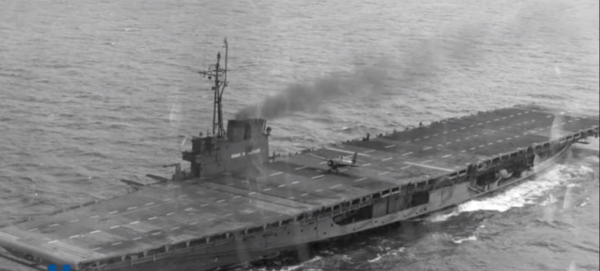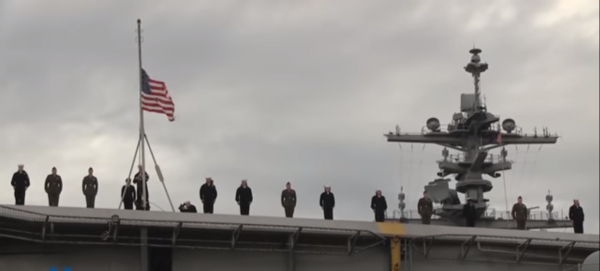Americans are extremely proud of the military and nothing invokes that strong sense of pride like the massive and powerful aircraft carriers that patrol our oceans. They are the centerpiece of America’s naval force.
When learning about these monsters of the sea, there is always something interesting new to be learned and it is some amazing stuff. Here are five things you don’t know about U.S. aircraft carriers.

(Military.com/YouTube)
Coming it at number one — did you know that the air wing of one Nimitz class carrier is more powerful than the entire air forces of more than half the world’s nations? A Nimitz has the capability to carry more than 90 combat aircraft. Although it pales in comparison to the 14,000 aircraft of the U.S. military, half the nations in the world only have 90 combat aircraft in their entire military force.
Number two — During World War II, two aircraft carriers were stationed on the Great Lakes as training ships. The USS Sable and the USS Wolverine were stationed on the Great Lakes. Both were purchased by the U.S. Navy in 1942 and converted into carriers. They were part of the “Corn Belt” fleet of training vessels. They weren’t technically warships because they did lack a few things, but they were great for practicing takeoffs and landings. The two ships trained more than 17,800 pilots, one of which was former President George H.W. Bush.
Check out all five facts in the video below:
Number three — USS Theodore Roosevelt was the first aircraft carrier to be assembled using modular construction. The Navy called the ship the “Big Stick.” It is the fourth Nimitz class carrier and her keel was laid down on Oct. 31, 1981 in Virginia. Modular construction meant pre-building large sections and then molding them together. This process took off 16 months of construction for this ship alone. Every aircraft carrier built since has used the same construction process.

(Military.com/YouTube)
Number four — During World War II, there were five pairs of U.S. aircraft carriers with the same name. During the war, the U.S. lost 12 aircraft carriers from enemy action. Five fought on as new carriers later in the war. This includes the USS Langley (CV-1), which was destroyed by the Japanese in 1942. A second Langley (CV-27) was commissioned in 1943. In May 1942, the USS Lexington (CV-2) was destroyed by a Japanese Torpedo but came back as CV-16 in 1943. In June 1942, the USS Yorktown (CV-5) was also destroyed but was recommissioned as CV-10 in 1943. The USS Wasp (CV-7) was sunk in 1942 but it too was recommissioned as CV-18 in 1943. The USS Hornet (CV-8) was fatally wounded in 1942 but was resurrected as CV-12 in 1943.
Number five — America’s aircraft carriers are the largest in the entire world and have been for the past 40 years. The Nimitz carriers have a flight deck that spans 4.3 acres. The newest supercarriers, the USS Gerald Ford class are even bigger. They are considered mega ships capable of carrying 100,000 tons.
American aircraft carriers are the envy of powerful nations around the world which is why rivals like China are scrambling to create their own.



